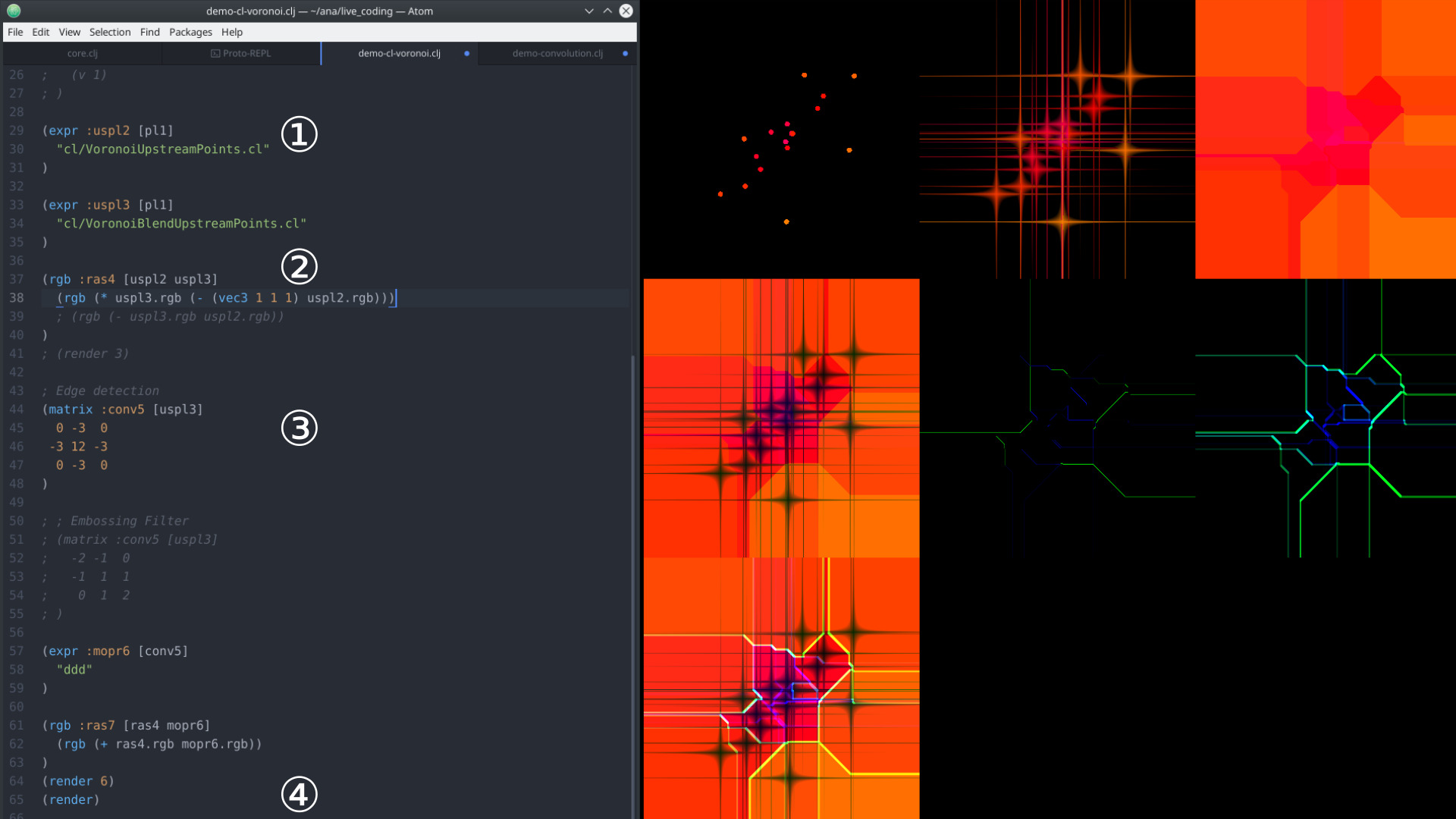Motivation and Acknowledgments
analog Not analog

analog Not analog (aNa) is an open source software that allows you to combine generative algorithms with web cams or video recordings in real time. It combines two techniques: live coding and video feedback loops.
The control of the program is inspired by live coding. While the program is running parts of the algorithm can be reprogrammed. This is done without losing the graphical data or having to restart aNa.
Motivation
I have been interested in algorithms for graphical work for many years. In 1982 wrote my first program for a Calcomp drum plotter. Since then I worked on programs for procedural textures, evolutionary art, generative modeling, and sometimes on slit scan processing of videos.
But after all these years, some of these techniques are almost lost. In today’s world they still exist in a niche as a subculture. For example plotters or analog video processing.
Today we have very powerful hardware and an huge amount of open source inspiration at our disposal. So my focus has changed as well: Now I combine visuals with live coding. This is the content of this presentation.
Example 1: An edited video.
This is based on a video from California University of Arts. “Dance 2019”. The original video has a creative common license. I picked some scenes out of this video and postpossessed it with OpenCV. The technical background come from detecting where in the image stream is a movement. Detecting the optical flow. May bee used in surveillance cameras.
Example 2: Working with the live coding editor.
Here you can see how I work with the live coding editor. The program is not executed from top to bottom in a single shot. I select different expression and sent them to the visualization server. You can go back and edit a part of the program and send this new version back to the server again.
Acknowledgments
aNa is inspired by Olivia Jack’s WEB based application Hydra. If you are interested in Hydra try it out. It runs without installation in a WebGL capable browser and gives very interesting results. Hydra has a subset of Javascript as a DSL. You can combine generative code and font works with the input of a WEB cam. https://hydra.ojack.xyz/
aNa comes to play when you want to integrate sensors, or game pads. Or if you want to push the hardware to the limit. Or when you want to interact with SuperCollider.
The video “optical flow based on CalArts Dance 2019” is based on a video from California Institute of the Arts (CalArts). Original name: “Dance 2019”.